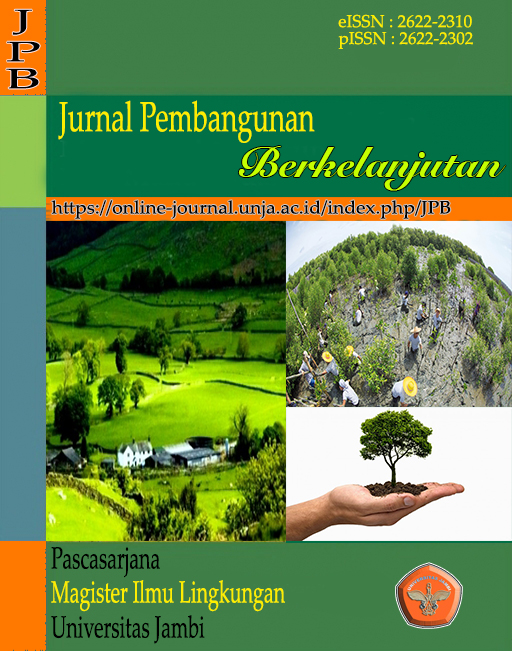Peta Distribusi Sebaran Kualitas Fisik Air Di Danau Sipin Kota Jambi Dan Rekomendasi Pemanfaatannya
DOI:
https://doi.org/10.22437/jpb.v5i1.18621Keywords:
Lake Sipin,, Water Physics Quality,, Sipin Lake Water Treatment.Abstract
This study aims to determine the water quality in Lake Sipin based on the physical quality of the water, provide information on the distribution map of water quality based on the physical quality of the water and assess the management designation of Lake Sipin. Lake Sipin water is one of the sources of air used by the community for daily life. The quality of water in cultural activities is influenced by the life of the surrounding environment. Water quality has different quality standards for each designation, so it is important to monitor and evaluate water quality. The data collection technique was carried out by purposive sampling and using the Storet method and the Stepwise test was carried out. The parameters observed in this study were temperature, TDS, TSS, turbidity and pH. Results Based on the research, the quality standard results for each parameter are within the water quality standard. Calculations using the Storet method of water quality get a value of -4, meaning that the water quality of Lake Sipin is in a lightly polluted status. relationship between parameters that have a relationship from the results of the stepwise test. TSS and TDS have a relationship with the value of R = 0.661 with the assumption that if the TSS value increases, the TDS value decreases. Turbidity and TSS have a relationship with the value of R = 0.731 with the assumption that the greater the value of Turbidity, the greater the TSS value. pH and TDS have a relationship with the value of R = 0.518 with the assumption that the smaller the pH value, the greater the TDS value. The status of the water quality in Lake Sipin meets the water quality standards, meaning that the water quality in Lake Sipin is still good. The distribution map for water quality has a variety of distributions. The water in the Sipin lake can still be used according to the water class classification based on observations of air physics parameters.
Downloads
Downloads
Published
How to Cite
Issue
Section
License
Copyright (c) 2022 Jurnal Pembangunan Berkelanjutan

This work is licensed under a Creative Commons Attribution 4.0 International License.
1. Authors retain copyright and grant the journal right of first publication with the work simultaneously licensed under a Creative Commons Attribution 4.0 International License that allows others to share the work with an acknowledgement of the work's authorship and initial publication in this journal.
2. Authors are able to enter into separate, additional contractual arrangements for the non-exclusive distribution of the journal's published version of the work (e.g., post it to an institutional repository or publish it in a book), with an acknowledgement of its initial publication in this journal.
3. Authors are permitted and encouraged to post their work online (e.g., in institutional repositories or on their website) prior to and during the submission process, as it can lead to productive exchanges, as well as earlier and greater citation of published work (The Effect of Open Access)











